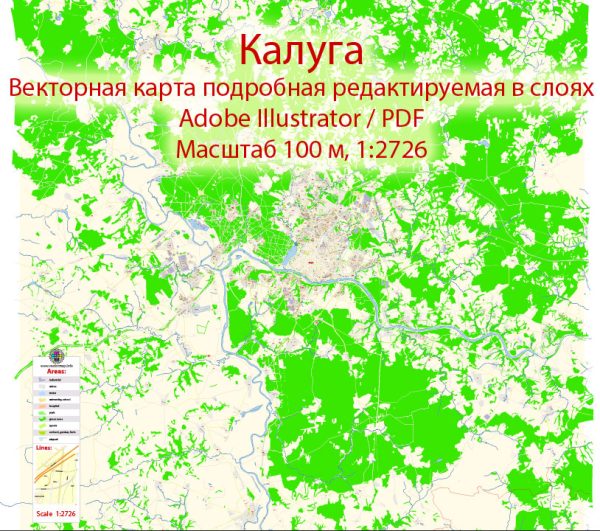Kaluga, located in western Russia, has a rich history of urban development that spans several centuries. The city is situated on the Oka River and is the administrative center of the Kaluga Oblast. Here’s an overview of the historical urban development of Kaluga:
- Early History: Kaluga’s history dates back to at least the 14th century when it was mentioned in historical records. It was initially a fortress that played a strategic role in defending the southern borders of the Grand Duchy of Moscow.
- 16th-17th Centuries: During the 16th and 17th centuries, Kaluga experienced significant growth and development. The city became a trade and cultural center, contributing to the expansion of the Russian state. It was also a key transit point on the trade route between Moscow and the western regions.
- 18th Century: In the 18th century, Kaluga continued to develop, and its architecture began to reflect the influence of the Baroque style, which was prevalent in that era. The city’s importance as a trade center increased, and its population grew.
- 19th Century: The 19th century saw further urbanization and industrialization in Kaluga. The city’s economy diversified, and new industries emerged. Infrastructure development, including the construction of roads and bridges, contributed to Kaluga’s connectivity with other regions.
- Soviet Era: The Soviet era brought about significant changes in Kaluga. Industrialization intensified, and the city became an important industrial center, particularly in the production of machinery and textiles. The urban landscape underwent transformations with the construction of new residential areas and industrial facilities.
- World War II: Like many Russian cities, Kaluga suffered during World War II. The city was occupied by German forces for several months, resulting in damage to infrastructure and loss of life. However, after the war, efforts were made to rebuild and restore the city.
- Post-Soviet Era: With the dissolution of the Soviet Union in 1991, Kaluga, like other Russian cities, faced challenges related to economic restructuring. However, in the following decades, the city experienced economic recovery and development. It became known for its automotive industry and attracted investment from both domestic and international companies.
- Modern Times: In recent years, Kaluga has continued to evolve as a dynamic urban center. Modern architecture, shopping centers, and cultural facilities have been added to the cityscape. Kaluga’s historical sites, including churches, museums, and monuments, also attract tourists interested in exploring its rich heritage.
Overall, Kaluga’s history of urban development reflects the broader historical and socio-economic changes that have shaped Russia over the centuries, from its medieval roots to its role as a thriving modern city.


 Author: Kirill Shrayber, Ph.D.
Author: Kirill Shrayber, Ph.D.